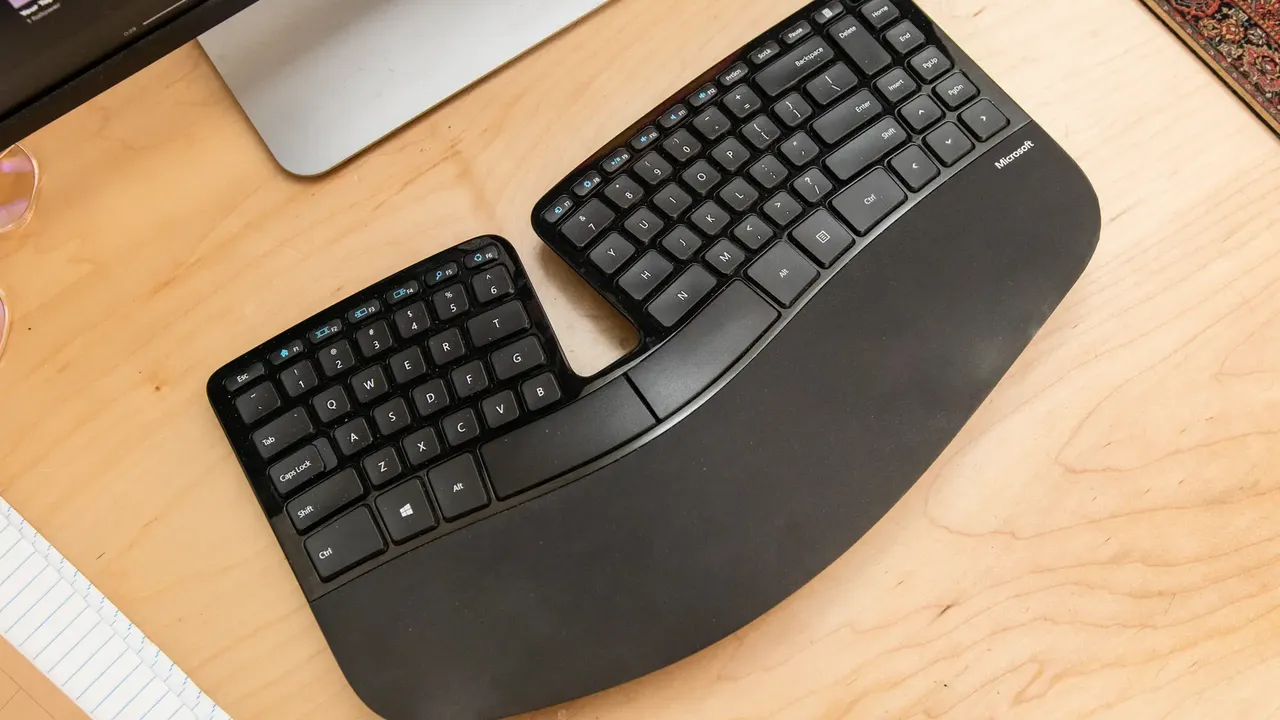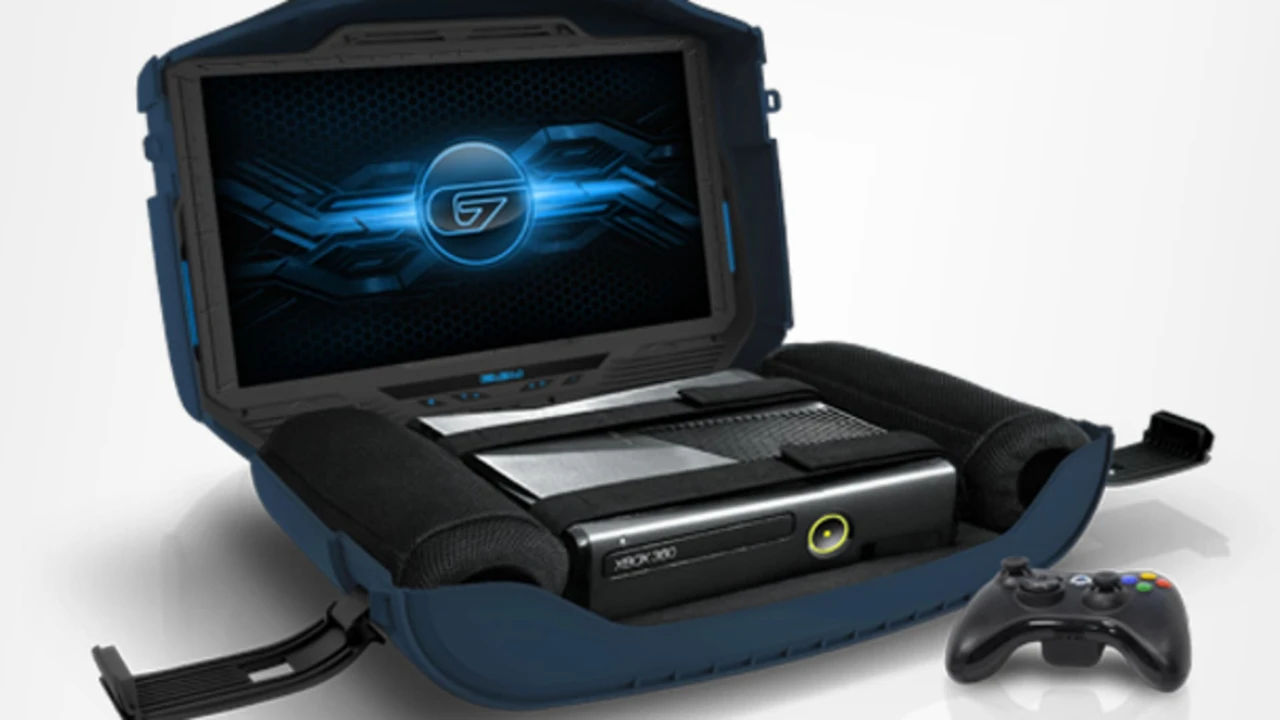
3 Best Ergonomic Keyboards for Comfortable Typing
Hey there, fellow typists and desk warriors! Are you spending hours hunched over your keyboard, feeling that familiar ache creeping into your wrists, shoulders, or even your neck? You're not alone. In our increasingly digital world, many of us are spending more time than ever typing, whether it's for work, school, or just keeping up with friends. And while a standard keyboard might seem fine at first, prolonged use can lead to discomfort, pain, and even serious conditions like Carpal Tunnel Syndrome or Repetitive Strain Injury (RSI).
That's where ergonomic keyboards come in. These aren't just fancy gadgets; they're tools designed with your body in mind, aiming to promote a more natural and comfortable typing posture. By minimizing awkward wrist angles, reducing keypress force, and distributing the workload across your hands, ergonomic keyboards can make a huge difference in your daily comfort and long-term health. Think of it as an investment in your well-being, just like a good office chair or a proper monitor setup.
But with so many options out there, how do you pick the right one? It can be a bit overwhelming, right? Don't worry, I've got your back (and your wrists!). In this comprehensive guide, we're going to dive deep into the world of ergonomic keyboards. We'll explore what makes a keyboard ergonomic, discuss the different types available, and then highlight three of the absolute best options on the market right now. We'll look at their features, who they're best for, and even give you a ballpark idea of what they cost. So, let's get those hands ready for some comfortable typing!
Understanding Ergonomic Keyboard Design and Benefits
Before we jump into specific recommendations, let's quickly break down what 'ergonomic' actually means in the context of keyboards and why it matters so much for your typing health. It's not just about looking futuristic; it's about science and comfort.
What Makes a Keyboard Ergonomic? Key Features for Comfort and Health
An ergonomic keyboard is designed to minimize strain and discomfort by promoting a more natural hand and wrist position. Here are some common features you'll find:
- Split Design: This is perhaps the most recognizable feature. Instead of a single, straight keyboard, many ergonomic models are split into two halves. This allows you to position your hands at shoulder-width apart, reducing the inward rotation of your wrists and forearms. It's like giving your arms a little more room to breathe.
- Tenting: This refers to the upward slope of the keyboard from the center. Tenting raises the inner edges of the keyboard, allowing your hands to rest in a more natural, handshake-like position. This reduces pronation (the inward rotation of your forearms), which can be a major source of discomfort.
- Negative Tilt: Many ergonomic keyboards allow for a negative tilt, meaning the front edge of the keyboard is slightly higher than the back. This helps to keep your wrists straight or even slightly extended, rather than bent upwards, which can compress the carpal tunnel.
- Integrated Palm Rests: A good palm rest supports your wrists and palms, keeping them in a neutral position while you type. This prevents your wrists from bending upwards or downwards, reducing pressure on the carpal tunnel.
- Contoured or Sculpted Key Layouts: Some keyboards feature keys that are arranged in a curved or sculpted pattern, matching the natural arc of your fingers. This can reduce the need for your fingers to stretch or contort, making typing feel more natural.
- Low-Profile Keys or Mechanical Switches: While not exclusively ergonomic, the type of key switches can impact comfort. Low-profile keys require less travel distance, reducing finger fatigue. Mechanical switches, especially those with lighter actuation forces, can also be more comfortable for some users as they require less force to press.
- Programmable Keys and Customization: Advanced ergonomic keyboards often allow you to remap keys or create macros. This can be incredibly useful for reducing repetitive keystrokes or optimizing your workflow to minimize hand movements.
Benefits of Using an Ergonomic Keyboard: Preventing Strain and Boosting Productivity
So, why should you consider making the switch? The benefits extend beyond just feeling a bit more comfortable:
- Reduced Risk of RSIs: This is the big one. By promoting natural postures, ergonomic keyboards significantly reduce the risk of developing conditions like Carpal Tunnel Syndrome, tendonitis, and other Repetitive Strain Injuries. Prevention is always better than cure!
- Improved Comfort: Even if you don't have an RSI, an ergonomic keyboard can make long typing sessions much more comfortable. You'll notice less fatigue in your hands, wrists, and forearms.
- Increased Productivity: When you're comfortable, you're more focused. Less pain and discomfort mean fewer distractions, allowing you to concentrate on your work and potentially type faster and more accurately.
- Better Posture: By allowing your arms and shoulders to relax into a more natural position, an ergonomic keyboard can indirectly encourage better overall posture, reducing strain on your neck and upper back.
- Long-Term Health Investment: Think of it as an investment in your future self. Protecting your hands and wrists now can prevent chronic pain and limitations down the road.
It's important to note that switching to an ergonomic keyboard might feel a bit awkward at first. There's a learning curve, especially with split designs. But trust me, with a little patience and practice, your hands will thank you.
Top 3 Ergonomic Keyboards for Enhanced Typing Comfort and Efficiency
Alright, let's get to the good stuff! After extensive research and considering various factors like design, features, user reviews, and overall value, I've narrowed down the field to three outstanding ergonomic keyboards that cater to different needs and preferences. These are not just random picks; they represent some of the best solutions available for improving your typing experience.
1. Kinesis Advantage360: The Ultimate Split Ergonomic Keyboard for Programmers and Power Users
If you're serious about ergonomics and spend a significant portion of your day coding, writing, or performing data entry, the Kinesis Advantage360 is often considered the gold standard. This isn't just a keyboard; it's a workstation for your hands. It's the latest iteration of the legendary Kinesis Advantage line, known for its unique contoured design.
Key Features and Design Philosophy: Deeply Contoured and Fully Programmable
- Deeply Contoured Keywells: This is the defining feature. Your fingers rest in concave keywells, reducing the need to stretch and allowing your hands to stay in a more relaxed, natural position. This design minimizes finger travel and strain.
- Split and Tented Design: The Advantage360 is completely split into two independent modules, allowing for infinite adjustability in terms of separation and tenting. You can position each half exactly where it feels most comfortable for your shoulders and wrists. It also features adjustable tenting angles (5, 10, and 15 degrees).
- Thumb Clusters: Instead of traditional modifier keys (Ctrl, Alt, Shift) being pressed by your pinky fingers, the Advantage360 places them in dedicated thumb clusters. This shifts the workload to your stronger thumbs, significantly reducing strain on your weaker pinkies.
- Mechanical Switches: It comes with high-quality mechanical switches (typically Cherry MX Brown or Red, depending on the model), offering a satisfying tactile feel and durability.
- Fully Programmable with SmartSet Engine: This keyboard is a dream for customization. Its onboard SmartSet engine allows you to remap any key, create complex macros, and store multiple layouts directly on the keyboard, without needing special software. This is fantastic for programmers who want to optimize their workflow.
- Wireless Connectivity: The Advantage360 offers both Bluetooth and USB-C connectivity, giving you flexibility.
Who is it Best For? Professional Typists and Ergonomics Enthusiasts
The Kinesis Advantage360 is ideal for:
- Programmers and Developers: The contoured layout and programmable keys are incredibly beneficial for coding, allowing for efficient access to symbols and commands.
- Writers and Data Entry Professionals: Anyone who types for many hours a day will appreciate the significant reduction in strain.
- Individuals with Existing RSIs: Many users report significant relief from Carpal Tunnel Syndrome or other wrist/hand pain after switching to a Kinesis keyboard.
- Ergonomics Enthusiasts: If you're committed to optimizing your workspace for health and comfort, this is a top-tier choice.
Potential Drawbacks and Learning Curve: A Significant Investment
Be aware that the Kinesis Advantage360 has a steep learning curve. The unique layout takes time to get used to, and touch-typing is almost a necessity. It's also a significant financial investment.
Pricing and Availability: Premium Ergonomics Come at a Price
The Kinesis Advantage360 typically retails for around $400 - $500 USD, depending on the specific model (e.g., Pro version with ZMK firmware for even more advanced customization). You can find it on the Kinesis website, Amazon, and specialized ergonomic equipment retailers. While it's a premium price, for many, the long-term health benefits and increased productivity make it a worthwhile investment.
2. Microsoft Sculpt Ergonomic Desktop: The Accessible Split Ergonomic Solution for Everyday Users
If the Kinesis Advantage360 seems a bit too extreme or out of your budget, the Microsoft Sculpt Ergonomic Desktop offers a fantastic balance of ergonomic design, comfort, and affordability. It's a popular choice for a reason, providing a significant upgrade over standard keyboards without requiring a complete re-learning of typing.
Key Features and Design Philosophy: Gentle Curves and Integrated Comfort
- Split Layout with Gentle Curve: The Sculpt features a gently curved, split key layout that helps to straighten your wrists and forearms. It's not as dramatically split as the Kinesis, making the transition easier for most users.
- Domed Shape and Reverse Tilt: The keyboard has a distinctive domed shape that encourages a more natural hand posture. It also features a reverse tilt (or negative tilt) design, where the front of the keyboard is slightly elevated, helping to keep your wrists in a neutral or slightly extended position.
- Integrated, Cushioned Palm Rest: A large, comfortable palm rest is built into the keyboard, providing excellent support for your wrists and reducing pressure points.
- Separate Number Pad: The number pad is separate from the main keyboard, allowing you to position it independently or remove it entirely if you don't use it often. This helps to keep your mouse closer to your body, reducing shoulder strain.
- Chiclet-Style Keys: It uses quiet, responsive chiclet-style keys, which offer a comfortable typing experience with good tactile feedback.
- Wireless Connectivity: The Sculpt connects wirelessly via a USB dongle, keeping your desk clutter-free.
Who is it Best For? Office Workers and General Users Seeking Comfort
The Microsoft Sculpt Ergonomic Desktop is an excellent choice for:
- Office Professionals: Perfect for daily office tasks, email, and document creation.
- Students: A great option for long study sessions and essay writing.
- Casual Users: Anyone looking to improve their typing comfort without a steep learning curve or a huge investment.
- First-Time Ergonomic Keyboard Users: Its less extreme design makes it a good entry point into ergonomic typing.
Potential Drawbacks: Non-Adjustable Split and Dongle Dependency
While excellent, the Sculpt's split is fixed, meaning you can't adjust the separation between the two halves. Also, it relies on a USB dongle, which might occupy a port and isn't as universally compatible as Bluetooth.
Pricing and Availability: Great Value for Ergonomic Benefits
The Microsoft Sculpt Ergonomic Desktop typically costs around $80 - $130 USD, often bundled with an ergonomic mouse. You can easily find it on Amazon, Best Buy, Microsoft's official store, and other major electronics retailers. Given its comfort and features, it offers excellent value for money, making ergonomic typing accessible to a wider audience.
3. ErgoDox EZ: The Highly Customizable Mechanical Split Ergonomic Keyboard for Enthusiasts
For those who love to tinker, customize, and want a truly personalized ergonomic experience, the ErgoDox EZ is a fantastic open-source-inspired option. It's a mechanical, split, and highly customizable keyboard that puts you in control of your layout and typing feel.
Key Features and Design Philosophy: Modular, Mechanical, and Open Source
- Fully Split Design: Like the Kinesis, the ErgoDox EZ consists of two completely separate halves, allowing for maximum flexibility in positioning.
- Adjustable Tenting and Tilt: It comes with adjustable 'wing' stands that allow you to set various tenting angles and even negative tilt, ensuring your wrists are in a neutral position.
- Hot-Swappable Mechanical Switches: This is a huge selling point for keyboard enthusiasts. You can choose from a wide variety of mechanical switches (Cherry MX, Gateron, Kailh, etc.) and even swap them out without soldering. This means you can experiment with different feels (linear, tactile, clicky) until you find your perfect match.
- Ortholinear Key Layout: The keys are arranged in straight columns rather than staggered rows. This can feel unusual at first but is often considered more natural for finger movement, as your fingers move up and down more than side to side.
- Open-Source Firmware (QMK/ZMK): The ErgoDox EZ runs on powerful open-source firmware, allowing for unparalleled customization. You can create multiple layers, complex macros, and unique keybindings, all configured through a user-friendly online configurator.
- Thumb Clusters: Similar to the Kinesis, it features dedicated thumb clusters for modifier keys, offloading work from your pinkies.
- Optional RGB Lighting: For those who like a bit of flair, many models offer customizable RGB backlighting.
Who is it Best For? Customization Lovers and Mechanical Keyboard Enthusiasts
The ErgoDox EZ is perfect for:
- Mechanical Keyboard Enthusiasts: If you love the feel and sound of mechanical switches and enjoy customizing your typing experience.
- Programmers and Power Users: The deep customization options and layered layouts are incredibly powerful for complex workflows.
- Users Seeking Ultimate Flexibility: If you want to fine-tune every aspect of your keyboard's ergonomics and layout.
- Individuals with Specific Ergonomic Needs: The high degree of adjustability can be beneficial for those with unique hand sizes or existing conditions.
Potential Drawbacks: Assembly and Learning Curve
While the ErgoDox EZ is sold pre-assembled, its ortholinear layout and extensive customization options mean there's a significant learning curve. It's not a plug-and-play experience for everyone, and you'll need to invest time in setting it up to your liking. It's also wired, which might be a consideration for some.
Pricing and Availability: A Customizable Premium Experience
The ErgoDox EZ typically ranges from $300 - $400 USD, depending on the chosen mechanical switches, keycaps, and any optional accessories (like tilt/tenting kits). You can purchase it directly from the ErgoDox EZ website (ZSA Technology Labs) and sometimes from specialized mechanical keyboard retailers. It's a premium product for a niche audience, but for those who fit the bill, it offers an unmatched level of personalization and ergonomic benefit.
Choosing Your Ergonomic Keyboard: Factors to Consider for Your Workspace
Now that we've looked at some top contenders, how do you decide which one is right for you? It's not a one-size-fits-all situation. Here are some key factors to consider when making your choice:
Budget Considerations: Investing in Your Health
Ergonomic keyboards range widely in price, from under $100 to over $500. While it might seem like a lot for a keyboard, remember you're investing in your long-term health and comfort. Consider how many hours you spend typing each day. For heavy users, a higher investment might pay off in reduced pain and increased productivity. For casual users, a more affordable option might suffice.
Typing Style and Learning Curve: Adapting to New Layouts
Are you a touch typist? Do you use all ten fingers, or do you hunt and peck? More extreme ergonomic designs (like the Kinesis or ErgoDox) often require a significant adjustment period, especially if you're used to a traditional staggered layout. If you're not willing to commit to a learning curve, a more gently curved or split design (like the Microsoft Sculpt) might be a better starting point.
Connectivity and Compatibility: Wired, Wireless, and Operating Systems
Do you prefer wired or wireless? Wireless options offer a cleaner desk, but some users prefer the reliability of a wired connection. Check if the keyboard is compatible with your operating system (Windows, macOS, Linux). Most modern ergonomic keyboards are cross-platform, but it's always good to double-check, especially for advanced features or software.
Key Switches and Feel: Mechanical vs Membrane for Typing Experience
This is a personal preference. Mechanical keyboards offer a distinct tactile feel and often a satisfying sound, with various switch types (linear, tactile, clicky) to choose from. Membrane or chiclet-style keys are generally quieter and require less actuation force. Try to test different key types if possible to see what feels best for your fingers.
Adjustability and Customization: Tailoring to Your Body
How much adjustability do you need? Some keyboards offer fixed splits, while others allow for complete separation and various tenting angles. If you have specific ergonomic needs or want to fine-tune your setup, look for highly adjustable and customizable options. Programmable keys can also be a huge benefit for optimizing your workflow.
Portability: On-the-Go Ergonomics
Do you need to take your keyboard with you? Most ergonomic keyboards are designed for desktop use and aren't particularly portable. If you travel frequently, you might need to consider a more compact, though perhaps less fully ergonomic, solution for on-the-go typing.
Setting Up Your Ergonomic Keyboard and Workspace: Beyond the Keyboard
Getting an ergonomic keyboard is a fantastic first step, but it's just one piece of the puzzle. To truly maximize your comfort and prevent strain, you need to consider your entire workstation setup. Think of it as a holistic approach to your typing environment.
Proper Posture and Desk Setup: The Foundation of Comfort
Even the best ergonomic keyboard won't help much if your overall posture is poor. Here are some quick tips:
- Chair: Use an ergonomic chair that supports the natural curve of your spine. Your feet should be flat on the floor or on a footrest, with your knees at about a 90-degree angle.
- Monitor: Position your monitor at arm's length, with the top of the screen at or slightly below eye level. This prevents neck strain.
- Elbows: Keep your elbows close to your body, bent at a 90- to 100-degree angle. Your forearms should be roughly parallel to the floor.
- Wrists: This is where the ergonomic keyboard shines. Ensure your wrists are straight and neutral, not bent up, down, or to the sides. Your ergonomic keyboard should help facilitate this.
- Shoulders: Keep your shoulders relaxed, not hunched up.
Integrating an Ergonomic Mouse: Completing the Comfort Circle
Your mouse is just as important as your keyboard when it comes to preventing strain. Consider pairing your ergonomic keyboard with an ergonomic mouse. Options include:
- Vertical Mice: These mice position your hand in a natural 'handshake' grip, reducing forearm pronation.
- Trackballs: Instead of moving the mouse, you move a ball with your thumb or fingers, keeping your hand stationary. This can be great for wrist and shoulder strain.
- Central Pointing Devices: These devices sit directly in front of your keyboard, allowing you to keep your hands closer to your body and reducing reaching.
Many ergonomic keyboard bundles, like the Microsoft Sculpt Ergonomic Desktop, often include a matching ergonomic mouse, which can be a convenient and cost-effective way to upgrade your entire input setup.
Taking Breaks and Stretching: Essential for Long-Term Health
No matter how ergonomic your setup is, prolonged static postures are not good for your body. Remember to:
- Take Micro-Breaks: Every 20-30 minutes, take a 30-second break to stretch your fingers, wrists, and shoulders.
- Take Longer Breaks: Every hour, get up, walk around, and do some light stretching for 5-10 minutes.
- Listen to Your Body: If you feel any discomfort or pain, stop what you're doing and rest. Don't push through the pain.
By combining a well-chosen ergonomic keyboard with proper posture, an ergonomic mouse, and regular breaks, you'll be well on your way to a more comfortable, productive, and pain-free typing experience. Your hands and your body will definitely thank you for it!
:max_bytes(150000):strip_icc()/277019-baked-pork-chops-with-cream-of-mushroom-soup-DDMFS-beauty-4x3-BG-7505-5762b731cf30447d9cbbbbbf387beafa.jpg)






